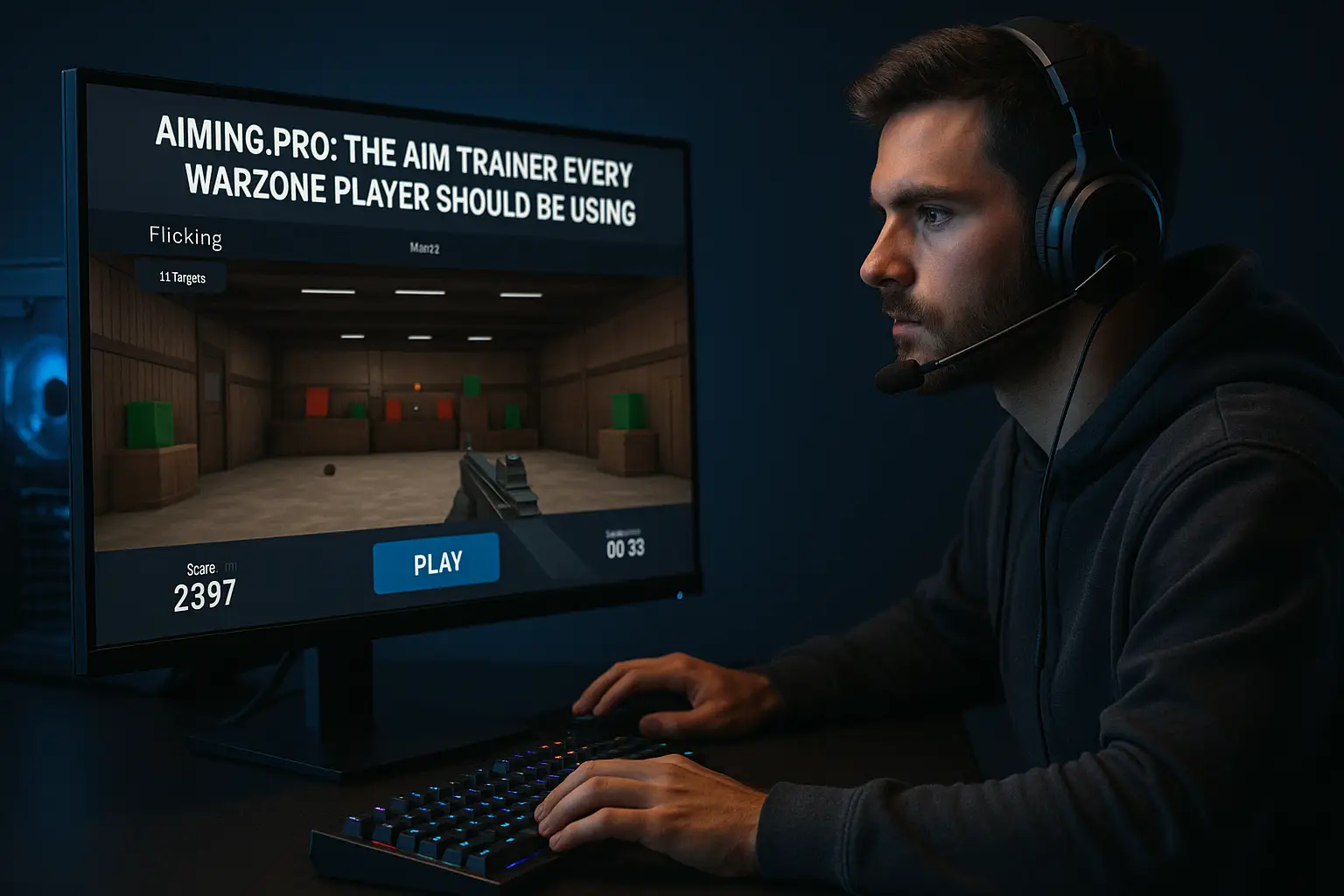
5 Tips to Master the Warzone COD Tactical Layout
Why Every Pro Player Uses the Tactical Layout in Warzone COD What Is the Tactical Layout and How Does It
First-person shooters have a fascinating history showcasing decades of innovation and creativity. In this blog, I’ll dive into the evolution of first-person shooters—from the early days of Doom to the modern intensity of Modern Warfare—and explore why these games still captivate players around the globe. As someone who has followed this genre for years, I’m excited to look back at its roots and highlight the significant shifts that shaped the FPS experience we know today.
First-person shooter (FPS) games started when computer graphics were in their infancy. Developers broke new ground by creating experiences where players could see through the eyes of the character. Titles such as Doom demonstrated that it was possible to immerse players in dark, atmospheric worlds using simple but effective design. I recall the sense of wonder when I first saw these pixelated battlegrounds, where each corridor and enemy encounter felt groundbreaking.
This era was marked by experimentation. Early game developers did not have the resources available today, yet they crafted innovative gameplay mechanics that continue to influence modern FPS titles. The emphasis was on fast-paced action and creating a sense of urgency that kept players on the edge of their seats.
The progression of FPS games is deeply connected to technological advances. As computers became more powerful, developers could push the limits of what was graphically possible. The leap from basic, blocky visuals to detailed 3D environments improved aesthetics and enriched gameplay. Modern titles now feature realistic lighting, physics simulations, and dynamic sound design, providing a more immersive experience.
One technological advancement was the introduction of multiplayer gaming. This allowed players to join forces or compete in real-time, creating new challenges and opportunities for strategy. The rise of multiplayer modes has led to online communities where players develop skills and form competitive teams. Each technological leap in graphics or network capability has set the stage for today’s diverse FPS experiences.
Another essential aspect of FPS games is in-game design and storytelling approaches. Early games often focused on straightforward gameplay, but designers started weaving more intricate narratives into their titles as the genre matured. I appreciate how modern FPS games combine action with storytelling elements, making each session part of a larger narrative.
The introduction of cinematic techniques, such as in-engine cutscenes and scripted sequences, transformed the storytelling landscape. Games began to present immersive worlds with detailed backstories and believable characters. While earlier titles left much to the imagination, current games now provide context that adds emotional and strategic depth to the experience through all-in-one story modes.
The timeline of first-person shooters shows a blend of iterative improvements and revolutionary innovations. I have compiled a list of key developments that have shaped the genre. These milestones serve as markers of progress and creativity.
Each step in this timeline represents a give-a-boost in how our games look, feel, and engage players on multiple levels. The progress achieved over the decades shows that the genre is both resilient and continually in a state of glow-up.
Like any significant innovation, the glow-up of first-person shooters did not come without obstacles. I have observed that developers have had to address several challenges to keep the genre fresh and engaging. One significant challenge has been balancing realism and playability.
Over time, developers have experimented with realistic military tactics simulations while ensuring the gameplay remains accessible and fun. High-fidelity graphics and accurate physics are impressive on paper, yet they can sometimes complicate game mechanics, alienating casual players who seek a pick-up-and-play experience. Each technological leap meant developers had to balance advanced features and user-friendly design.
Recognizing these issues helps me appreciate the industry’s constant innovation. Each problem has been met with creative solutions that have, in many ways, spurred further innovations.
Modern FPS titles offer many improvements beyond stepped-up graphics and storytelling. Game developers now emphasize intricate details that take the overall experience up a notch. The focus is not solely on visual appeal but also on game mechanics and immersive soundscapes.
Refined Gameplay Mechanics: Many modern games have refined control schemes and offer subtle yet effective inputs. Elements such as recoil management, tactical strategy, and environmental interactions add layers of complexity. Players now must coordinate movement, aim, and decision-making with split-second precision.
Integration of Advanced Audio: Sound design has taken a central role in creating atmosphere. Realistic audio cues not only increase tension but also serve as strategic elements. I have enjoyed how footsteps, distant gunfire, and ambient noises deliver feedback that can shape gameplay strategies.
The emergence of Competitive Gaming: The rise of competitive gaming continues to influence design choices in FPS titles. Tournaments and live-streamed matches encourage developers to fine-tune mechanics, ensuring games remain competitive and fair. This has led to communities where casual and professional players connect through shared passion and competition.
Advanced physics engines and more intelligent enemy AI make each in-game encounter a test of skill and strategy. Every update or new title now brings innovations that build on the successes and lessons of previous generations, pushing the genre towards even greater sophistication.
Looking back, several key components have enabled the continual success of first-person shooters. One of the most critical contributions lies in introducing basic but effective game design principles. The combination of rapid action and immersive environments created gameplay that resonated with audiences then and continues to do so today.

For instance, early FPS games used minimal storylines and sparse environmental details. They prioritized fast-paced action to capture players’ attention. Over time, these simple ideas were honed and developed to include more complex narratives, strategic gameplay, and interactive environments that redefined interactive entertainment.
These foundational elements serve as a historical record and offer insight into how gamers and developers continue to shape the future of this genre.
I often receive questions about first-person shooters, especially from those curious about the genre’s progression. I have compiled some frequently asked questions based on my observations and experiences:
Question: How did early FPS games influence modern designs?
Answer: Early FPS titles like Doom introduced the core mechanics that have carried on to today’s games. They set a precedent for fast-paced action and immersive gameplay that modern titles have refined over time.
Question: What role does technology play in the glow-up of FPS games?
Answer: Technology is at the heart of the genre’s glow-up. As computer hardware and software improved, developers could incorporate realistic graphics, advanced audio, and networked multiplayer capabilities, significantly boosting the gaming experience.
Question: Are modern FPS games too complex for new players?
Answer: Although modern games often include advanced features, many titles offer tutorials, simplified modes, or scalable difficulty levels to help new players adapt to the stepped-up gameplay mechanics.
The glow-up of FPS gaming is an ongoing adventure. I see the future filled with exciting innovations, including more excellent use of virtual and augmented reality.
The potential for machine learning and better physics simulation could lead to more responsive and intuitive gameplay. With each new generation of technology, I expect to see a blend of realistic scenarios and creative storytelling continuing to push the boundaries of how interactive entertainment is defined.
This progress also means that developers will likely experiment with hybrid genres. The integration of role-playing elements and open-world exploration is already evident in some modern titles. Such blending of styles offers variety and depth to players seeking new challenges in diverse gaming environments.
The future of first-person shooters is not just about bigger explosions. It is also about richer narrative experiences and community engagement. I remain excited about what lies ahead as technology and creativity progress.
Over the decades, the impact of FPS games has grown far beyond the screen. Communities have formed, tournaments have flourished, and new forms of creative expression have emerged within the gaming culture.
Fans and developers share a passion for pushing boundaries and reimagining interactive experiences. This mutual drive has transformed game design and influenced how stories are told across different media.
Today, online forums, streaming platforms, and social media are hubs where players exchange tips, debate strategies, and celebrate memorable moments from iconic games. This sense of community creates an environment where the legacy of early titles is cherished, and the anticipation for future innovations is palpable. The collaboration between gamers and creators continues to shape a dynamic culture that honors the past and fuels the drive for the next gaming stage.
In many ways, the industry’s legacy is written by its pioneers and passionate fan base. Every new release builds on the efforts of previous generations, ensuring that FPS games remain ever-evolving and endlessly exciting.
The glow-up of first-person shooters tells a story of continuous innovation and passion. The genre has transformed remarkably from the humble beginnings of groundbreaking titles like Doom to the expansive, narrative-rich experiences we enjoy today.
Every step up in graphics, audio, and gameplay mechanics builds on a strong foundation created by early pioneers. The challenges and innovations along the way show how developers have consistently pushed boundaries to create games that resonate with players worldwide.
If you are curious about the glow-up of FPS games or are considering jumping into the genre, I encourage you to explore titles across different eras. Each game is a piece of a larger puzzle that illustrates the creative progression of interactive entertainment. There is always something new to learn and experience in the ever-changing gaming landscape.
Thank you for reading The Evolution of First-Person Shooters: From Doom to Modern Warfare. If you liked it, read Why Your PS5 Controller Might Not Be Charging—And How to Fix It.
Ask Questions: If you have any questions, leave them in the comments below.
Happy Gaming!

Why Every Pro Player Uses the Tactical Layout in Warzone COD What Is the Tactical Layout and How Does It

Best Aim Trainer for Warzone (Aiming.pro): Why Every Player Should Be Using It If you’re looking for the Best Aim

Warzone Sprint-to-Fire Delay Explained (Top 5 Secrets to Win More Fights in 2025) Field Brief: Understanding Warzone Sprint-to-Fire Delay “The